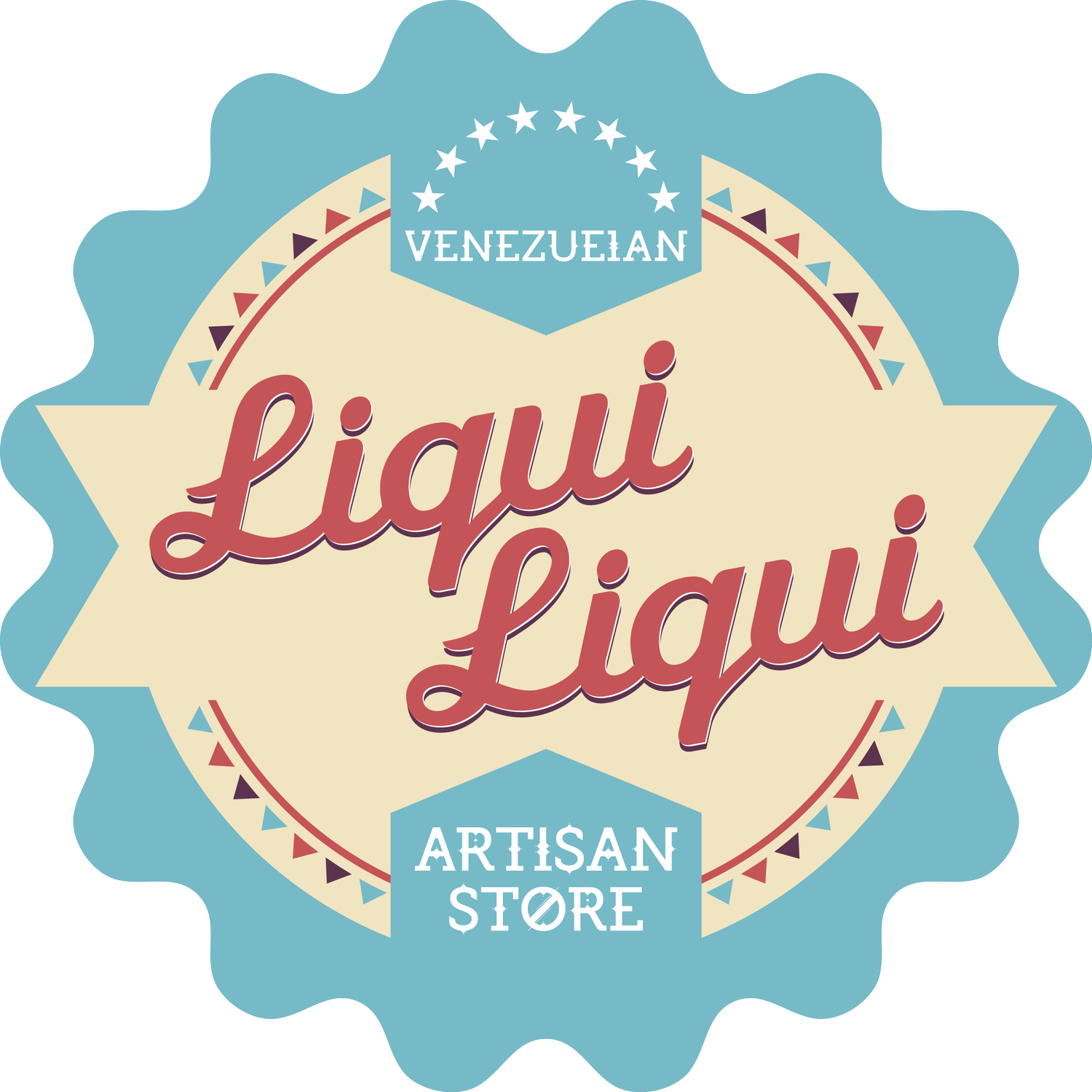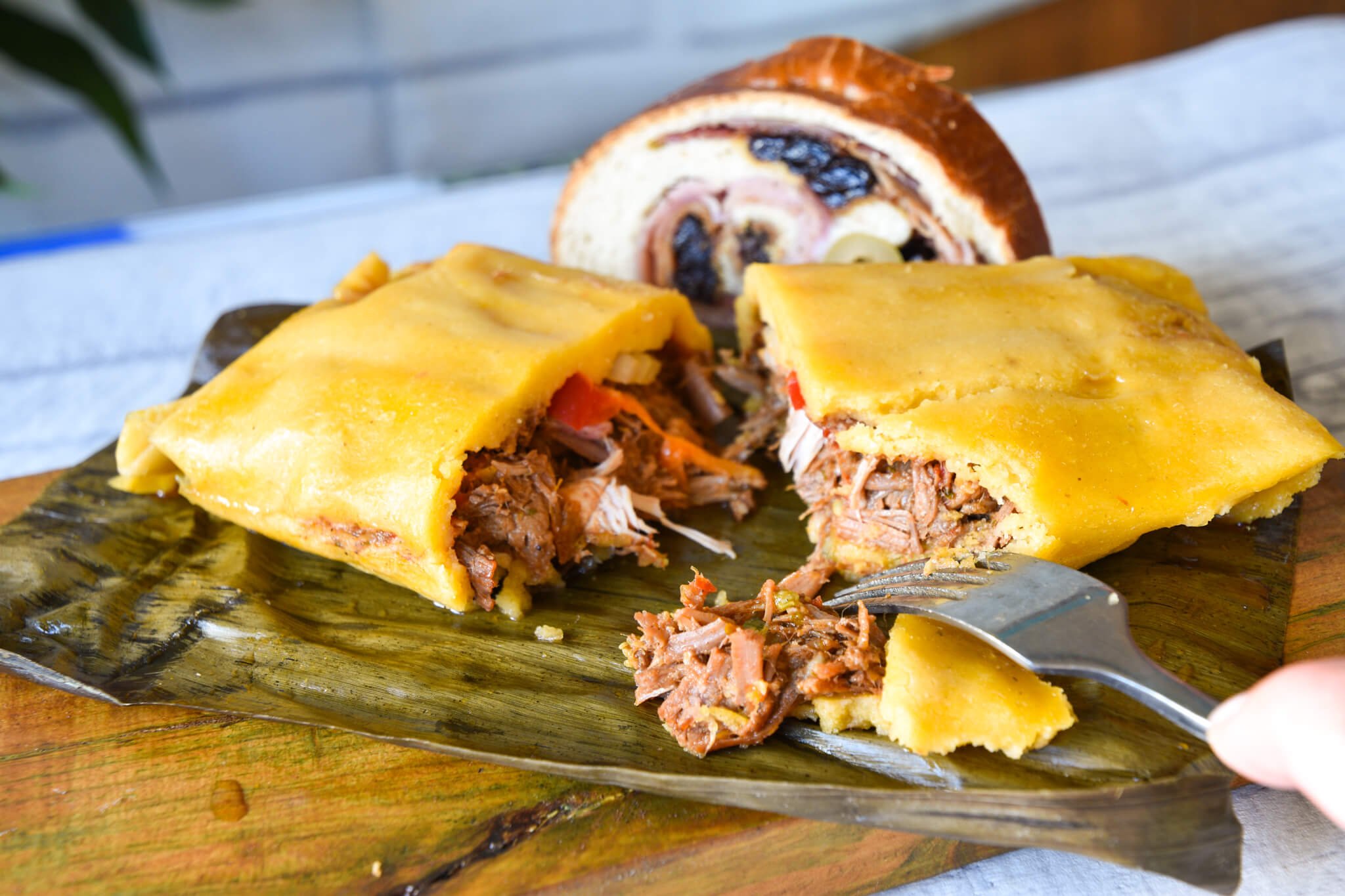Venezuelan Christmas Food: Hallacas - A Delicious Tradition
When the festive season arrives in Venezuela, the air fills with the mouthwatering aroma of Hallacas, a traditional Christmas dish that has been cherished for generations. Hallacas are much more than just a meal; they symbolise family gatherings, love, and the joy of Christmas.
Here, at Liqui-Liqui, our little corner of Venezuela in South West London, every year we take a delightful journey into the heart of Venezuelan Christmas traditions, making hundreds of hallacas for the Venezuelan community in the UK.
We love exploring and sharing with our readers what Hallacas are, how they are made, and the rich history behind this beloved culinary delight.
Traditional Venezuelan hallacas made by the Liqui-Liqui team
So, what are Hallacas? Are they the long lost cousin of the Mexican Tamal?
Please don’t call them tamales, because though they may resemble one they really are not. Tamales are delicious but quite different from hallacas. Hallacas are savoury, corn-based delicacies that resemble tamales, but with their own unique twist.
Hallacas differ from tamales as the filling has plenty more ingredients than a tamal, including raisins and olives. The main feature of the hallaca is the filling, which is surrounded by a very thin layer of corn dough. Tamales are more dough than filling.
Hallacas are made by stuffing a mixture of seasoned meats (chicken, beef and pork), olives, raisins, and capers into a masa (corn dough) made from a blend of cornmeal and various spices. The filling can vary from region to region and even from family to family, making each Hallaca a personal and special creation.
Delicious and traditionally filled hallacas.
Hallaca: History and Traditions
The roots of Hallacas can be traced back to Venezuela's colonial past, where Spanish and indigenous influences blended to create this delightful Christmas delicacy. Although there are many different stories about its origins, the most popular one states that it was created by the slaves while Venezuela was still a Spanish colony. During those days the slaves used to put the leftovers of their master's Christmas festivities in a bit of cornmeal dough, then they would wrap them with banana leaves and boil them to mix the flavours.
“I can’t think of any other Venezuelan dish with a historical narrative of this magnitude”
Over time, the dish became an integral part of Venezuelan Christmas celebrations across all social stratas, surviving the test of time. For a nation that has been struggling with hyperinflation and food scarcity since 2016 this is truly a test of time and endurance.
Sumito Estevez described the dish as “probably one of the most concrete acts of popular resistance that I have seen in the past 20 years of dictatorship.”
Despite the years of hardship, Venezuelans continue to make do and will sacrifice many things in order to secure the precious ingredients used to make hallacas. They may not make as many as they used to and they might be smaller in size than previous years, but they are still present every Christmas Eve.
A labour of love: making traditional Venezuelan hallacas for Christmas
How are Venezuelan Christmas Hallacas made?
Making Hallacas is an art that often involves the entire family coming together in the spirit of Christmas. The process is time-consuming but deeply rewarding, as it allows loved ones to bond while preparing this cherished dish.
Each family passes their recipe on through the generations, and every family member gets a task according to their generational status. In our family there is an on-going joke that our aunt, Nelly, has never ascended through the ranks and despite turning 90 next year she is still in charge of the most menial tasks, like cleaning banana leaves.
Our grandmother, or ‘abuela’ as we like to call her, is in charge of making the guiso, the main filling. It is with her love and careful seasoning that the ‘guiso’ makes up the bulk of the hallaca, it is what will give it its unique flavour. Everyone else just works around her and under her orders. In the UK, without our abuela, it is Erika who is the boss.
An auntie or an older cousin, carefully lays out scoops of orange achiote-stained masa dough onto clean banana leaves. Making sure the dough is smooth, thin and perfectly round is an art in itself.
The hallaca then gets passed around the table to get filled. Sisters add olives and capers, a brother the shredded chicken and at the end each hallaca gets wrapped up in fragrant banana leaves and tied with twine like a small gift.
Laughs and stories are shared along the way. It's a cherished bonding experience that reinforces the spirit of togetherness and love during the holiday season.
According to the UN Refuge Agency, approximately 7 million Venezuelans have fled the country, finding new homes in different parts of the world. And what do immigrants always take with them? Their food and traditions.
But, let’s face it, making hallacas is not for the faint hearted. It is usually a group activity that is labour intensive and very time consuming. So, if you don’t have your dear abuela and several cousins around you to make hallacas, but you would still like to enjoy them this Christmas what do you do? You order them!
Where can I get my Hallaca fix in the UK?
Here at Liqui-Liqui we love making hallacas and sharing our Venezuelan traditions with you. You can order our traditional hallacas and vegan hallacas from our Shop
Or come on over to our lovely restaurant in Colliers Wood to enjoy one surrounded by Latin hospitality.
Hallacas are not merely a delicious culinary tradition; they encapsulate the heart and soul of Venezuelan Christmas celebrations.
With their unique blend of flavours and rich history, these savoury parcels bring joy and warmth to every gathering. So, this holiday season, embrace the spirit of Venezuelan culture by savouring the delightful taste of Hallacas and creating cherished memories with your loved ones.



